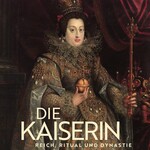Family Matters
Female Dynastic Agency in the Correspondence of Empress Eleonora Magdalena of Pfalz-Neuburg (1655-1720)
Early modern ruling dynasties can be seen as a specific manifestation of historical forms of the family. Known to contemporaries as “houses” or “lineages”, they were by no means timeless constants; rather, like the concept of kinship itself, they were social constructions with the principal aim of securing dominion and the commitment of their members over generations. Until recently they have predominantly been studied in connection with the development and characteristics of statehood. This approach to the legal, administrative and political history of dynasties and dynastic rule distorts the view of the role of women and second sons in this context. The present project places the focus on the dynastic agency of a high-ranking princely woman, Empress Eleonora Magdalena of Pfalz-Neuburg.
Like other dynastic women she represented and connected two families during the course of her life. For almost four decades, her correspondence with her father and her brother constituted an important axis of communication between the house of Habsburg and her birth dynasty, which in 1685 gained the Palatinate electorate. The two houses’ close cooperation within the Holy Roman Empire was in part based on the fact that the empress’s numerous younger siblings fulfilled the role of a “dynastic reserve” (Volker Press) for the Habsburgs.
The project will tackle research questions like the following that have (in part due to the loss of most female correspondence as a central source) remained largely unanswered to this day: in which spheres was a female member entitled to act in the context of dynastic relations? How and under what conditions could these spheres be exploited or occupied? How did marriage-based alliances develop over time? Who participated and what themes and foci can be established in intra-dynastic communication? If a princely consort was subject to two Dynastieräsonen or loyalties, what consequences did that have for her active involvement?
Research on these questions will be based on a source collection that is not only much more extensive than the holdings hitherto known to exist for women of the House of Habsburg, but whose specific characteristics allow for an investigation of dynastic agency: the handwritten correspondence between Empress Eleonora Magdalena of Pfalz-Neuburg and her father Philipp Wilhelm (elector Palatine since 1685) and her eldest brother Johann Wilhelm (elector from 1690 to his death in 1716). The correspondence spans the years 1677 to 1716 and comprises 5,300 pages.
In addition to answering these questions, the project also aims to make images and transcriptions available online for all 1,151 of the empress’s handwritten letters. A selected part of these letters will be presented with a full editorial apparatus; for all letters by the empress’s father and brother or by third parties, brief registers will be provided. The completion of a full edition of all letters will require a follow-up-project due to the sheer extent of preserved correspondence. By including the edited letters’ metadata in research platforms, international visibility for the edition and hence one of the project’s key goals will be secured.
Contact
Doz. Dr. Katrin Keller (Principal Investigator)
Dr. Ines Peper
Anna Spitzbart BA MA
Project term
2021–2024
Funding
Austrian Science Fund (FWF): P 34651



